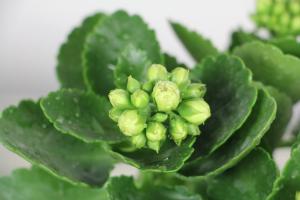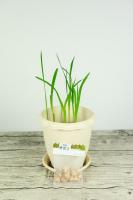How to Protect Small Tomato Plants
Tomatoes are a favourite crop among many gardeners. They are relatively easy to grow and yield bountiful harvests. However, small tomato plants can be vulnerable to pests, disease and weather conditions. Therefore, it is important to take the necessary measures to protect them. Here are some tips on how to protect small tomato plants.
Choose a Good Location
The location where you plant your tomato plants is important. Choose a spot that receives plenty of sunlight, has good drainage and is protected from strong winds. Tomatoes love warmth, so a sheltered spot that traps warmth is ideal. If your garden is prone to flooding, consider planting your tomatoes in raised beds. They also like slightly acidic soil with a pH of 6.0-6.8.
Water Properly
Tomatoes need consistent moisture to thrive. Keep the soil around the plants moist, but not waterlogged. When watering, aim for the roots, not the leaves. Wet leaves can lead to fungal diseases. Water early in the morning or late in the day when the sun is not as strong. This helps avoid evaporation and allows the plants to absorb more water.
Use Mulch
Mulch is a layer of material placed on top of the soil around the plants. It helps retain moisture, suppress weeds and regulate soil temperature. Use organic mulch like straw, leaves or grass clippings. Keep the mulch away from the stems of the plants to avoid rotting. Mulch also helps prevent soil-borne diseases from splashing onto the leaves of the plant.
Protect from Pests
Tomatoes can be attacked by different pests, such as aphids, cutworms, hornworms and tomato fruit worms. Some pests like to feed on the leaves of the plants, while others go for the fruit. To protect your tomato plants, use organic insecticides, such as neem oil, soap spray or garlic spray. You can also place row covers over the plants to keep pests away. Regularly check your plants for any signs of pest damage and remove any affected leaves as soon as possible.
Prevent Diseases
Tomatoes are prone to diseases like blight, early and late, and wilt. These diseases can seriously reduce the yield of your plants or even kill them. To prevent diseases, remove any dead or infected leaves from the plant as soon as you notice them. Make sure the plants are not overcrowded and have adequate air circulation. Rotate where you plant your tomato plants every year to prevent the build-up of soil-borne diseases.
Conclusion
Small tomato plants require attention and care, but with the right measures in place, they can yield delicious and healthy fruit. By choosing a good location, watering properly, using mulch, protecting from pests and preventing diseases, you can ensure that your tomato plants thrive and produce bountiful harvests year after year.

 how many times do yo...
how many times do yo... how many planted tre...
how many planted tre... how many pine trees ...
how many pine trees ... how many pecan trees...
how many pecan trees... how many plants comp...
how many plants comp... how many plants can ...
how many plants can ... how many plants and ...
how many plants and ... how many pepper plan...
how many pepper plan...































